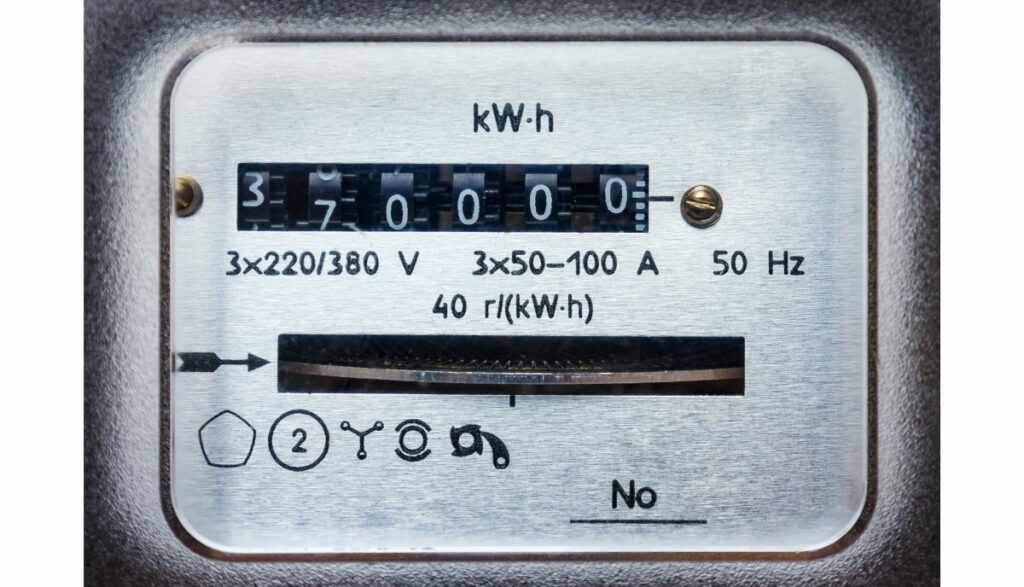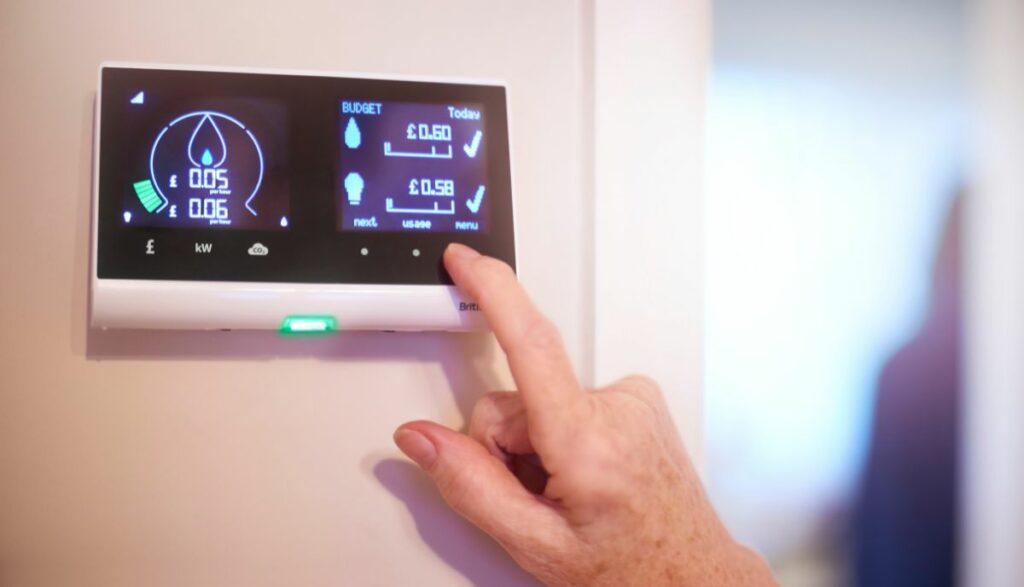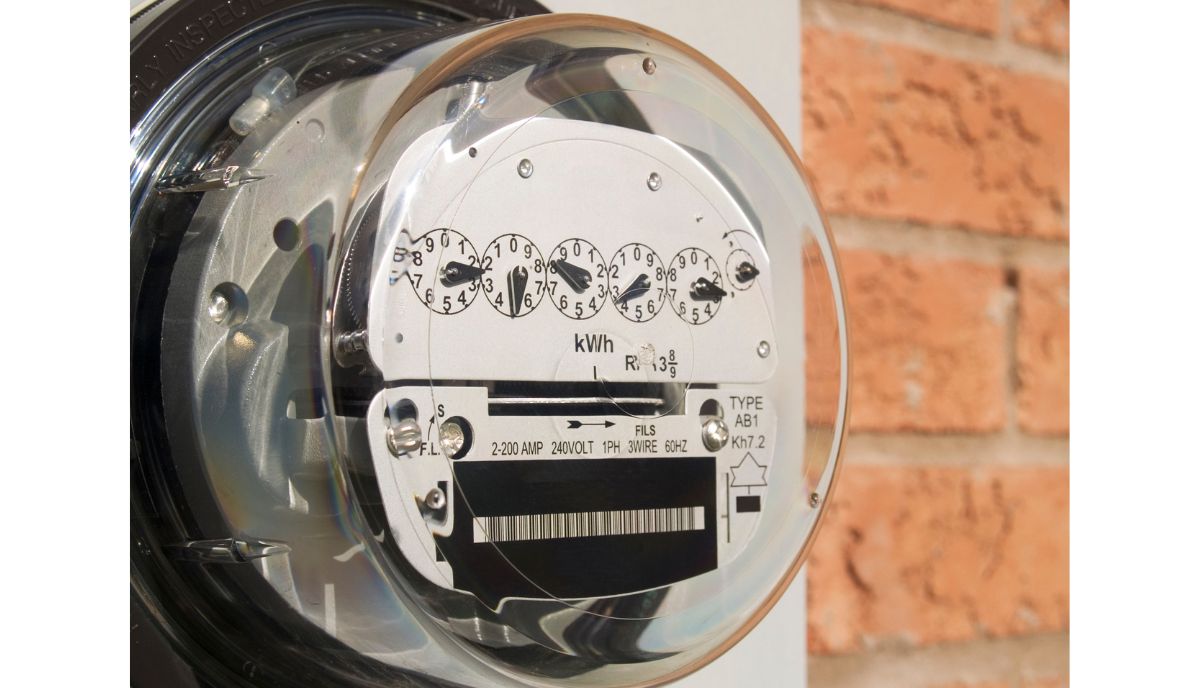Despite what some people may think, electric meters did not always exist. They had a starting point. Consider this image of the reason meter on Wikipedia. It looks nothing like the meters you know today.
It used a mercury reservoir to measure the ampere-hours. While Wired credits “Oliver B. Shallenberger” for creating the first electric meter in 1888, they agree that Thomas Edison had already introduced his own ampere-hour meter by that point.
It consisted of a jar with two zinc plates in a zinc-sulfate electrolyte. A current running through the jar would move the zinc from the positive plate to the negative plate. Workers would determine a consumer’s electrical consumption by measuring the amount of zinc that moved between the plates.
Even though the method’s messy, Edison preferred the approach to mechanical alternatives. But Edison’s makeshift meter doesn’t matter to people today because his system transmitted direct current.
Modern homes use alternating current, which is why Shallenberger gets so much praise for creating the electric meter. He made the watt-hour meter while working for Westinghouse Electric, a company fighting to spread the reach of alternating current at a time when direct current was the standard in the United States.
Why Was The Meter Invented?
Electric meters track electrical consumption. Even though Edison and Shallenberger are often cited for creating electricity meters in the 1880s, these devices technically appeared on the scene as early as the 1870s.
The dynamo changed everything in the 1860s because experts could use the invention to generate larger amounts of electrical energy. Once utility companies realized they could sell power, they started searching for methods to determine the cost.
This meant finding a way of figuring out the amount of electricity consumers used. Smart Energy International has traced the earliest meter to the lamphour meter Samuel Gardiner patented in the early 1870s.
It considered the fact that a single switch controlled all the lamps on a meter and measured the time during which energy flowed to the load. Nonetheless, Shallenberger gets most of the credit because his invention revolutionized the industry.
Shallenberger solved the metering problem almost by accident. He was investigating an electric lamp when a spring fell out. The spring caught his attention because it had rotated. Shallenberger blamed the spinning electromagnetic fields.
He created a wheel that used the lamp’s rotational force to measure an AC circuit’s amp hours. Engineers continued to build upon this design, making the electric meter people know today. The Engineering and Technology History Wiki has a picture of Shallenberg’s watt meter if you’ve never seen one.
No one doubts the vital role electric meters play today. Edison was determined to sell electricity like gas, and initially, he charged his customers per lamp. Modern meters are far more reliable.
They measure your electrical consumption in kilowatt-hours (1 kilowatt hour is 1000 watt-hours). Most homes use one of two electric meter types:
1). Analog Meters

You find these mechanical devices at the point where the grid’s service wires enter your property. Utility companies keep the meter in a glass housing. The metal disc rotates to reveal your energy consumption, moving faster or slower depending on the amount of electricity your appliances are using.
You don’t own the meter, so you can’t take it apart. But if you did, you would see one conductor coil that responds to the current and another that deals with the voltage. These coils create a magnetic field.
The utility company will send a person to read the data on an analog meter. It doesn’t offer remote functions. They determine your electrical consumption by comparing each month’s numbers to the previous month’s readings.
You can do the same thing. Take readings at the beginning of the month and compare them to readings at the end of the month to determine the number of kilowatt-hours you’ve used in those four weeks.
2). Digital Meter

Digital meters are more accurate. They have an electronic display for the utility company’s employees to read when they visit your home. Some digital meters can send information back to the company via high-frequency signals.
The digital meter will take note of any electricity you generate (via solar panels and wind generator turbines) and send to the grid.
Smart meters are slowly replacing digital meters in many countries because of their convenience. Smart meters continuously communicate with the utility provider. The company can bill you accurately without sending a technician to read your meter.
This lowers their operating costs. It also puts many homeowners at ease because it allows them to track their usage with greater ease. Some smart meters will send their data to your phone. This allows you to track and even adjust your energy consumption habits.
Some utility providers use these devices to advise consumers on the best way to lower their energy bills.
Suffice it to say, neither Shallenberger nor Edison could have imagined what would become of their metering technology when they developed these designs in the 1880s.
History And Evolution Of Electric Meters
- Before Thomas Edison introduced his chemical meter, many customers used electricity for free.
- Edison’s 1979 meter was somewhat groundbreaking. Unfortunately, it was unreliable and inaccurate, and it annoyed his customers. Edison is also renowned for trying to charge his customers per lamp, a system many consumers abused. It fell out of favor. The method became impractical once you had subdivisions of lighting circuits.
- Elihu Thomson was vital to the development of the electric meter. The patent he filed for his electric meter speaks volumes about his understanding of electrical engineering despite the limitations of this era. Initially, his work mirrored Edison’s innovations.
- Eventually, Elihu abandoned zinc sulfate for silver bars and an aluminum disk when he created a reliable wattmeter. Edison incorporated Elihu’s design into his creations.
- These developments drew the ire of the public. Many consumers had abandoned gas lamps for their electric counterparts because electricity was free. They took offense at Edison’s decision to charge them for using electricity. Interestingly, National Geographic has noted that Edison took inspiration from gas lighting systems when he started exploring ways of commercializing the electrical system.
- Edison took a gamble because he had no way of knowing that his efforts would ever produce a profit, especially when so many people had grown accustomed to using electricity for free.
- Tesco Metering notes that Tesla disappears in such conversations because he was a poor businessman despite his scientific brilliance. Many people forget the role he played in the advancement of electrical systems. That includes identifying rotating magnetic fields. Edison was shrewd, going so far as to skew the public’s perception of AC by lobbying for its use in executions, undermining Westinghouse’s efforts to support and fund Tesla’s AC-focused experiments.
- Edward Weston, Edison’s competitor, is another vital player in the electric meter’s history. The National Inventors Hall of Fame credits Weston with creating the first accurate portable voltmeter. Besides creating the foundation for the developments that amp, volt, and watt meters underwent for centuries to come, he also advanced Thomson’s work.
- Eventually, Shallenberger came along. Besides shaking the market by creating a voltmeter at Westinghouse, his design for the electric meter matches modern designs.
- Shallenberger’s innovation appeared just as the AC revolution took off. Electricity gained so much ground that the IEC (International Electrical Congress) created rules to standardize its measurement.
- Elihu never stopped working. He had more experience than his peers in this field and continued to refine the electric meter.
- It is also worth noting the work Fleming did on vacuum tubes because other engineers used this technology to create better meters. One example is E.B. Moullin’s vacuum tube voltmeter, the first of its kind. The University of Queensland Australia has a picture of Moullin’s thermionic voltmeter and the details of his patent.
- The IEC was still working behind the scenes to standardize electrical measurements and units.
- By the 1970s, digital multimeters had entered the picture. Additionally, moving coil galvanometers faded, giving way to vacuum tube meters.
These days, electric meters are commonplace. Companies and engineers don’t fight over metering patents the way they did centuries ago because decades of innovation have simplified the technology.
In fact, most customers show little or no interest in the origins of their meters. Modern electric meters perform similar functions, regardless of the brand.

